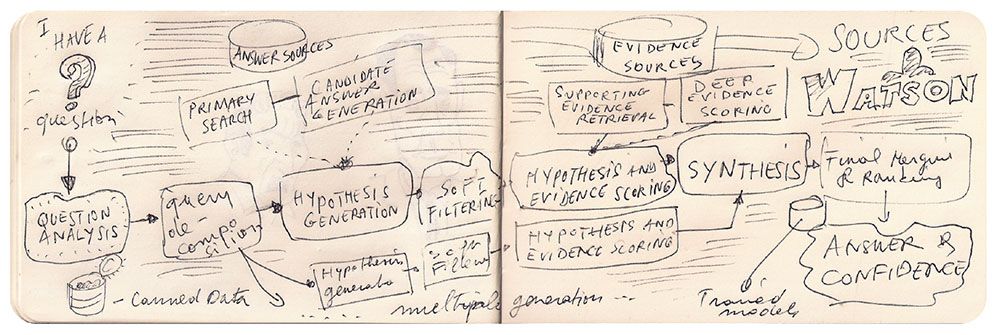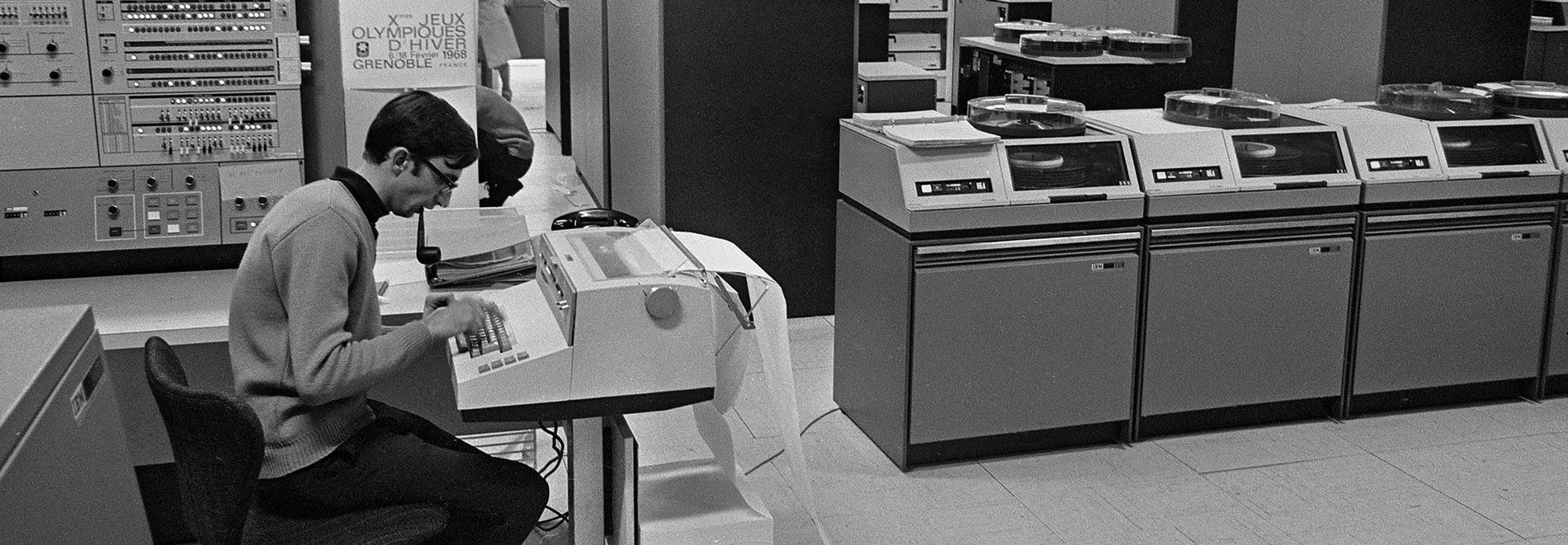Ibm Watson the First Computer to Win a Jeopardy Prize Pot of 1 Million Dollars
That morning we reach the IBM Watson Centre on Madison Avenue. The street Madison Avenue has been metonymous with the American advertising industry since the 1920’s and the term “Madison Avenue techniques” refers, according to Wikipedia, to the “gimmicky, slick use of the communications media to play on emotions.” Ironically, today the old advertising companies moved away, and it’s now the street where a lot of the technology consultancy firms such as Deloitte and Accenture are located. Together with IBM, these companies play a huge role in changing the face and model of advertising agencies by integrating the study of big data and data analytics with the creative side that is advertising. Big Data is here to stay and the agencies have to invest in new tools, talent, and ideas. One such tool is the IBM Watson analytics system. We enter the IBM lobby area with an oversized Jeff Koons sculpture and are guided to the sleek, modern corporate office with a twist of the creative space we would expect in an agency, on one of the higher floors. Watson, named after IBM’s first CEO and industrialist Thomas J. Watson, is an artificially intelligent computer system capable of answering questions posed in natural language. The computer system was specifically developed to answer questions on the quiz show Jeopardy! In 2011, Watson competed on Jeopardy! against some of the former winners. Watson received the prize of 1 million USD.
Cognitive computing
From their website, we know that cognitive computing systems learn and interact naturally with people to extend what either humans or machines could do on their own. They are taught, not programmed. They help human experts make better decisions by penetrating the complexity of Big Data, accelerating the pace of research. Most data now comes in unstructured forms such as video, images, symbols and natural language (apart from huge amounts of noise) – a new computing model is needed in order for businesses to process and make sense of data, and enhance and extend the expertise of humans. Rather than being programmed to anticipate every possible answer or action needed to perform a function or set of tasks, cognitive computing systems are trained using artificial intelligence and machine learning algorithms to sense, predict, infer and, in some ways, think.

It’s an amazing research tool, with a Question & Answer API at its core, that will democratize healthcare, the system will make the diagnostic process much faster but the physician still makes the final decisions. It’s a great example of humans and machines working together. The first commercial application was for Utilization Management decisions in lung cancer treatment and many others are following. Companies and organizations, or agencies, using cognitive computing will have a large advantage in taking controlled risks and proofed decisions.
Related articles
September 16, 2022
To automate or not to automate
April 23, 2022
Autonomy on the edge of realism
September 23, 2019
The Heckel diagram
The industry Site Visit of the IBM Watson Research Center at Madison Avenue NYC, was part of the USA residency of the EMBA program at the Berlin School of Creative Leadership in New York – Jan 29 2015 .


